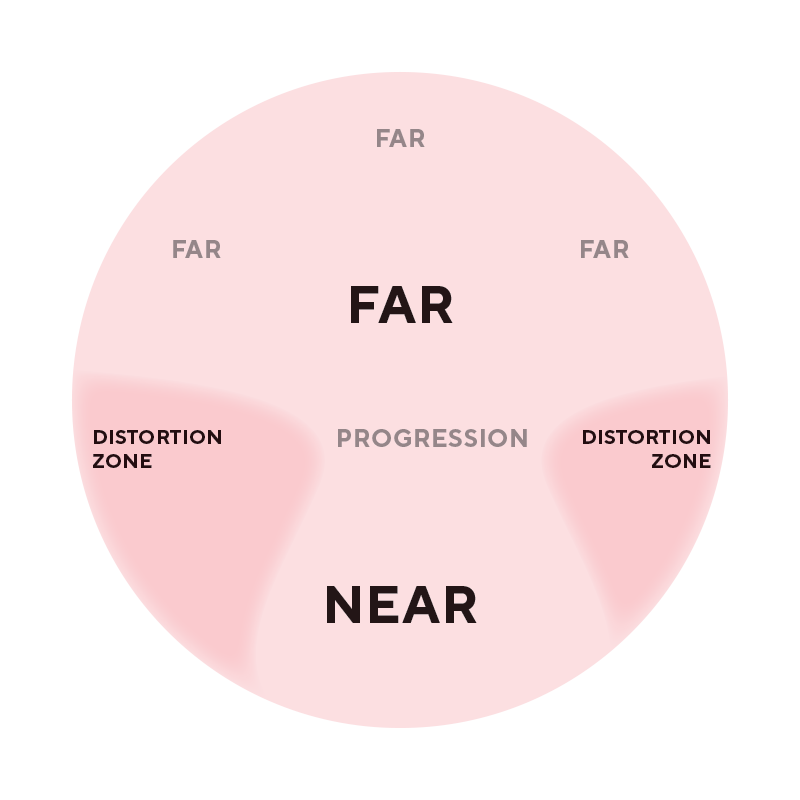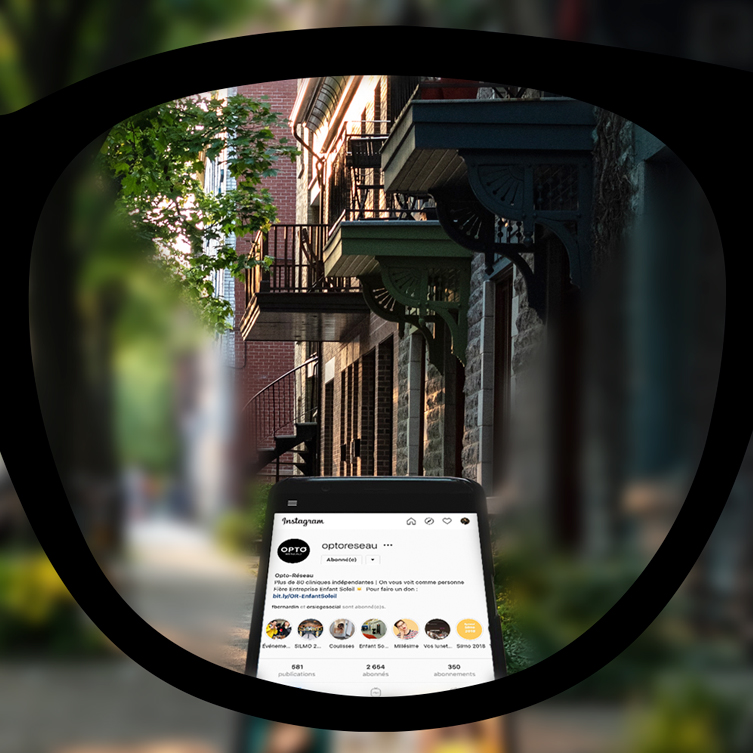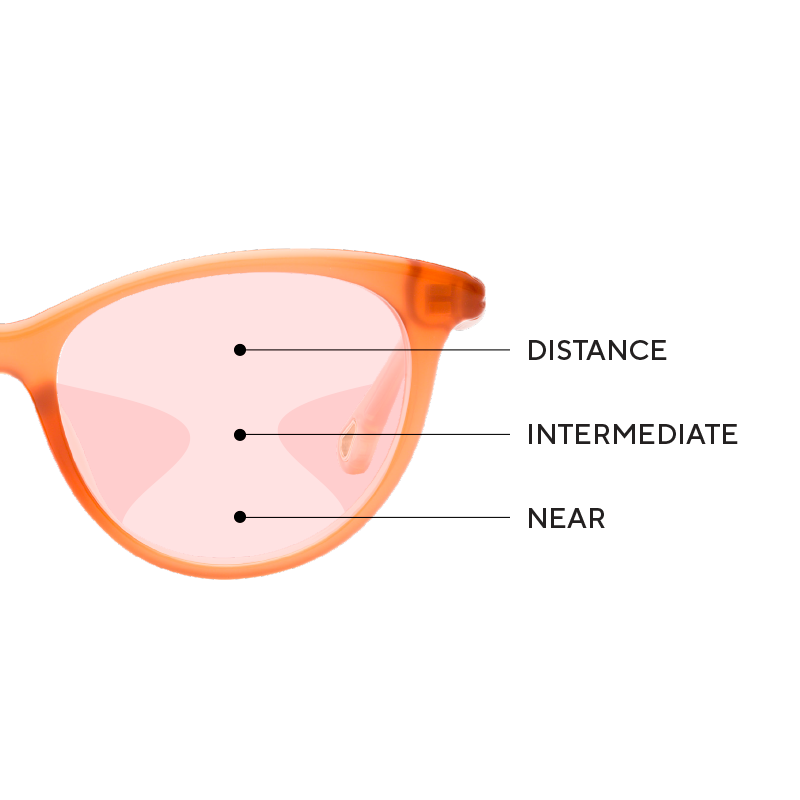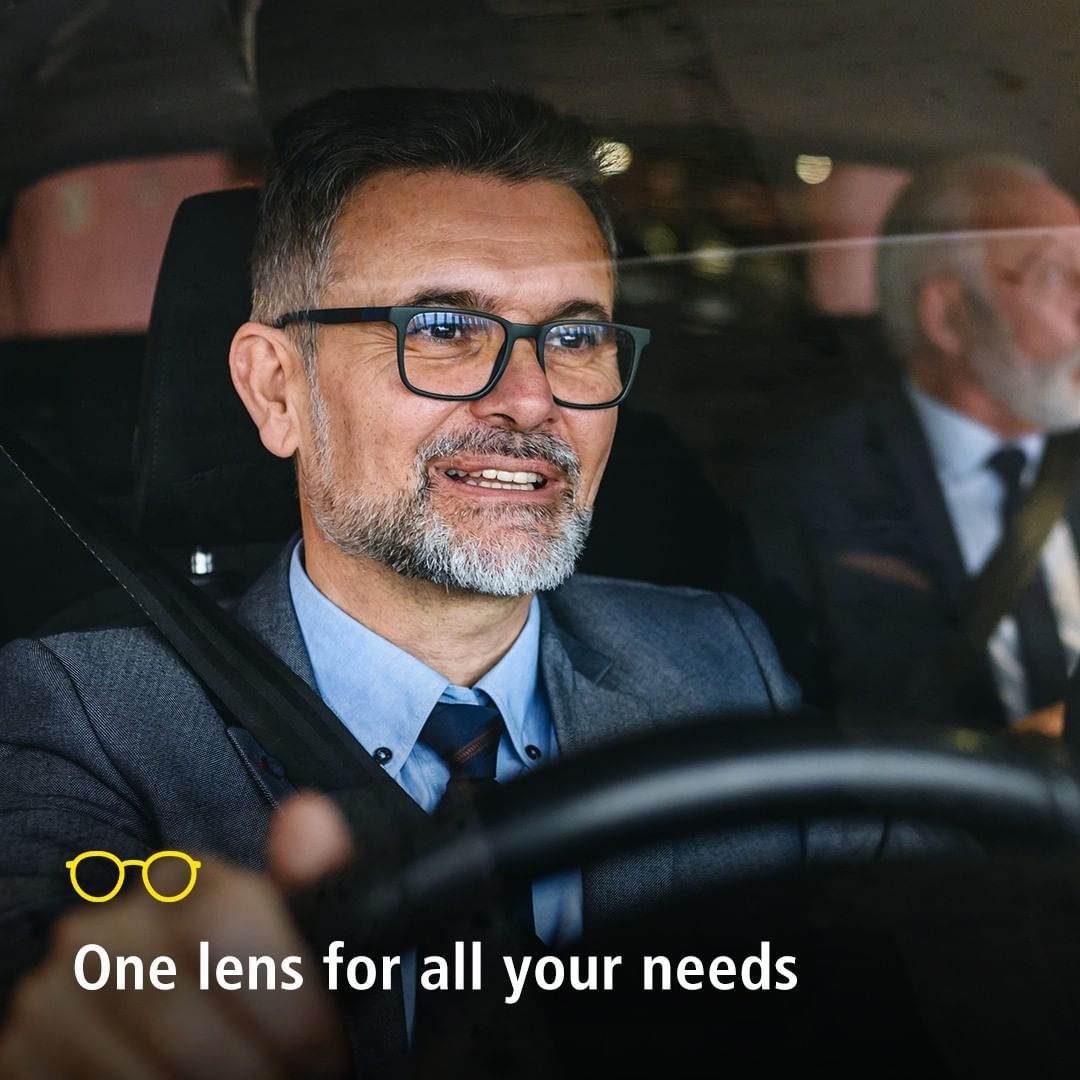3 misconceptions about high-precision progressive lenses
Our team sheds light on some of the myths surrounding progressive lenses while providing a brief overview of the benefits of this misunderstood optical solution.
What kind of vision condition are progressive lenses used to correct?
Presbyopia is a visual condition that is in essence the gradual loss of your eyes’ ability to focus on close objects. Contrary to hypermetropia, it is a normal consequence of aging and usually appears around the age of 40 when the crystalline lens in the eye – which is what allows you to focus on nearby objects – hardens, thickens, and loses its elasticity.
It is possible for someone with presbyopia to suffer from other vision conditions as well such as myopia, astigmatism, or hypermetropia. In these cases, they could opt for several pairs of glasses, multifocal contact lenses, or progressive lenses.
Why choose progressive lenses?
With progressive lenses, you only need one pair of glasses to adapt your vision to near, intermediate, and far distances. The following video describes how progressive lenses work:
Individuals with presbyopia generally opt for these kinds of lenses because it prevents them from having to constantly carry 2 or 3 pairs of glasses with them. And unlike multifocal lenses, there are no visible lines where the lenses transition.
Furthermore, thanks to innovations pioneered by lens manufacturers (such as Zeiss, Hoya, Essilor, and Nikon), progressive lenses are becoming increasingly sophisticated and customizable. For example, you can get high-precision progressive lenses that are tailor-made for your specific needs. Despite all the advantages associated with these lenses, some people will shy away from trying them due to preconceived notions. To help you make an informed decision, our team of professionals reveals the truth about some of these misconceptions.
Three misconceptions… or three reasons to try high-precision progressive lenses
1 – Adapting to progressive lenses
Progressive lenses have different vision zones which allow you to enjoy a clear vision at near, intermediate, and far distances.
Thanks to technological progress, manufacturers now offer lenses with seamless transition zones (for focusing on objects at near or far distance) while reducing the blurriness on the sides of the lenses.

By making it a habit of slightly move your head, as described in the following video about Varilux® X series lenses, you’ll be able to enjoy a clear vision at all distances.
Contrary to popular belief, most people adapt to transition lenses after a few hours or days.
Opto-Réseau offers patients an adjustment warranty for a minimum of 30 days to ensure maximum comfort. If after two or three weeks you are not comfortable wearing your progressive lenses, please get in touch with your Opto-Réseau optical expert.
Here are a few tips to make it easier to adjust to progressive lenses:
- Wear your glasses as often as possible (morning to night)
- Avoid putting your old glasses on
- Get used to moving your head, not your eyes. Point your nose in the direction of what you want to look at and then raise or lower your chin.
- Get used to transitioning from near vision (ex.: checking your phone or reading a book), to intermediate vision (looking at your computer screen), to distance vision (watching tv or glancing out the window).
Keep in mind that if you choose personalized lenses, it will be easier to get used to your new glasses because they will be designed taking into account your physiology and lifestyle.
Examples of high-precision progressive lenses include ID MyStyle by Hoya,SeeMax by Nikon, Varilux X series by Essilor, and Smart life by Zeiss.
2 – Choosing the frames
Our optical experts will ask you a few questions to make sure they have the information they need to provide you with the right eyewear. Questions such as: Do you work with a computer? Do you enjoy a hobby that requires excellent near vision such as sewing or drawing? Do you drive frequently? The answers to these questions will help you get the right progressive lenses as well as the right frames.
When it comes to your frames, you don’t need to worry that progressive lenses will limit your choices. Of course, your optician will recommend models that are suited to your new lenses but rest assured that with recent technological advances and increasingly innovative options, the choice of frames (shapes, style, and size) is nearly endless. SmartLife Individual lenses by Zeiss are the perfect example.
3 – Can you only get clear progressive lenses?
Nope! You can also get tinted or photochromic progressive lenses. That means you can enjoy a clear vision at any distance while protecting your eyes from UV rays and glare.
Because one of the advantages associated with progressive lenses is limiting the number of glasses required for your everyday activities, why not get the most out of your eyewear by choosing light intelligent lenses such as Transitions®?
To find out about the various options available and the answers to your questions about progressive or other kinds of lenses, consult your Opto-Réseau eyecare professionals.
- Frames
- Glasses
- Health
- Lenses
- Ophtalmic lenses
- Presbyopia
- Progressive lenses
- Solar
- Sunglasses
- Vision trouble








